PRINCETON ARCHITECTURAL PRESS
NEW YORK

Published by
Princeton Architectural Press
37 East Seventh Street
New York, New York 10003
Visit our website at www.papress.com.
2015 Louise Fili Ltd and Lise Apatoff
Photographs 2015 Louise Fili Ltd
All rights reserved
Portions of this book were previously published as The Civilized Shoppers Guide to Florence in 2007.
No part of this book may be used or reproduced in any manner without written permission from the publisher, except in the context of reviews.
Every reasonable attempt has been made to identify owners of copyright. Errors or omissions will be corrected in subsequent editions.
Editor: Sara E. Stemen
Book design: Louise Fili and Kelly Thorn.
Design assistance: Nicholas Misani
Cover design: Louise Fili and Spencer Charles
Photograph on by Lorenzo Acciai
Special thanks to: Meredith Baber, Sara Bader, Nicola Bednarek Brower, Janet Behning, Erin Cain, Megan Carey, Carina Cha, Andrea Chlad, Tom Cho, Barbara Darko, Benjamin English, Russell Fernandez, Will Foster, Jan Cigliano Hartman, Jan Haux, Mia Johnson, Diane Levinson, Jennifer Lippert, Katharine Myers, Jaime Nelson, Jay Sacher, Rob Shaeffer, Marielle Suba, Kaymar Thomas, Paul Wagner, Joseph Weston, and Janet Wong of Princeton Architectural Press Kevin C. Lippert, publisher
Library of Congress Cataloging-in-Publication Data
Fili, Louise. The cognoscentis guide to Florence : shop and eat like a Florentine / Louise Fili & Lise Apatoff. First edition. pages cm. Includes indexes.
ISBN 978-1-61689-321-7 (paperback)
ISBN 978-1-61689-431-3 (epub, mobi)
1. ShoppingItalyFlorenceGuidebooks. 2. RestaurantsItalyFlorenceGuidebooks. 3. Florence (Italy)Guidebooks. 4. WalkingItalyFlorenceGuidebooks. I. Apatoff, Lise. II. Title. TX337.I82F553 2015 381.10945511dc23 2014028202
TABLE OF CONTENTS

INTRODUCTION
W hile florentines bemoan the influx of the megadesigner stores that increasingly globalize their beautiful city, it is nonetheless impressive to see how many family businessesmilliners, bookstores, bakeries, art supply shops, restaurants, woodcarvers, silversmiths, goldsmithshave continued to flourish for generations. It is heartwarming to hear their stories and see how passionate they are about what they do, and how deeply they love the neighborhoods they live and work in.
For Gabriele and Gherardo Filistrucchi, whose eponymous shop creates custom wigs, it is business as usual since 1720same name, same building, and two floods later. Or consider artisans like Simone Taddei, who learned the thirty-two-step process of making leather-covered boxes from his father and grandfatheror Ilaria Ballatresi of Dolci & Dolcezze, whose sublime flourless chocolate cake has for decades drawn devotees worldwide.
Whether it is a multigenerational enterprise, or young entrepreneurs who offer a new interpretation of traditional practices, all share a commitment to excellence using time-honored techniques, which is what The Cognoscentis Guide to Florence seeks to celebrate. These are the shops that Florentines have chosen to make part of their daily routines, decade after decade, for good reason.
This book is divided into eight walks, although one of the biggest pleasures of Florence is wandering the winding streets and making your own discoveries. As all exploration requires sustenance, favorite restaurants, caffs, wine bars, and gelaterias are listed at the conclusion of each section. Buon viaggio e buon divertimento!

LEGEND
 shop
shop  food & drink
food & drink
 accepts credit cards
accepts credit cards
 does not accept credit cards
does not accept credit cards
SOME PRACTICAL INFORMATION
hours: Most shops in Florence are open from 9 or 10am to 1pm, and 3:30 to 7:30pm, although it is now quite commonplace for more and more shops to remain open all day (orario continuato).
In autumn, winter, and spring many shops are closed on Monday mornings. However, in the summer, when schools are not in session (June 15 through the end of August), closings are instead on Saturday afternoons. Few shops are open on Sunday, whatever the season. There was a time not so long ago when the entire country would close down in August (chiuso per ferie), but today most shops close only for a week or two. Which week(s) is at the discretion of the shopkeeper, so be prepared for the occasional disappointment.

chiuso: Possibly the saddest word in the Italian language, this often appears on shop doors at unanticipated times, and means, simply, closed. It can be an indication of a momentary inconvenience, or, when paired with per sciopero (strike), it can last the day. (Torno subitoback soonis more hopeful.) Dont despair; by changing course a few degrees youll undoubtedly stumble onto something equally wonderful elsewhere.
holidays: The following dates are religious and state holidays, when offices, banks, and many shops are closed: January 1, January 6, Easter Sunday and Monday, April 25, May 1, June 24, August 15, November 1, December 8, December 25 and 26. Museums are open on a rotating schedule; restaurants often stay open, but call ahead to confirm. Bus service on these days is reduced, following the festivo (holiday) schedule, except on May 1 (Workers Day), when public transport stops altogether.
credit cards: Many of the shops listed in this book take credit cards, although very few accept American Express. Plan accordingly.
restaurant reservations: Although lunch without a reservation is usually not a problem (assuming you arrive by 1pm), a prenotazione is recommended for dinner. While it was once a challenge to dine out on a Sunday in Florence, more restaurants are now staying open seven days a week.
shopping etiquette: Even if you dont have a command of their language, most Italians will appreciate any attempt at communication, no matter how badly you mangle Buon giorno, Signora (Signore) when entering a shop. Always say thank you when leaving: Grazie, Signora (Signore). Buon giorno (used in the morning); Buona sera (anytime from the afternoon on).

THE DE MEDICI CODE
D uring the RISORGIMENTO , or resurgence, the political and social process that unified Italy during the nineteenth century, the city of Florence experienced massive urban renewal. It had become apparent that businesses that were once simply people selling from carts, market stalls, or out of ground floors of family homes were now evolving into the kinds of operations we know todaylarge and small shops separate from street and home. This posed a distinct municipal problem: how to distinguish business addresses from home addresses. Since it would have been impossible to renumber the entire city, a unique numbering classification was born. As a result, to the dismay and confusion of todays visitors, buildings in Florence operate on two numbering systems. Buildings housing commercial businesses have red numbers, meaning that the number listed in the address is followed by an
Next page

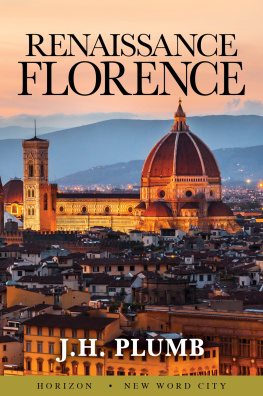
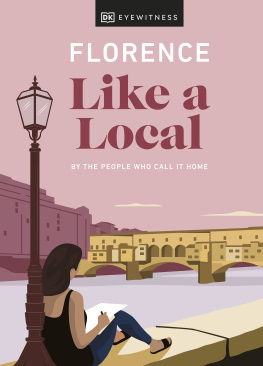
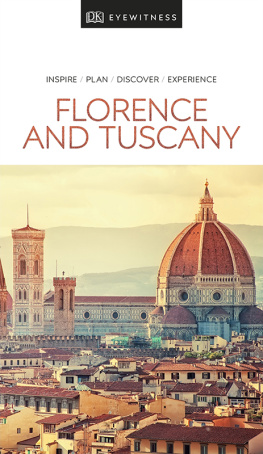
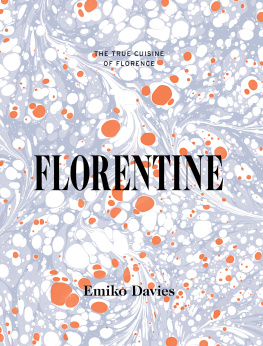

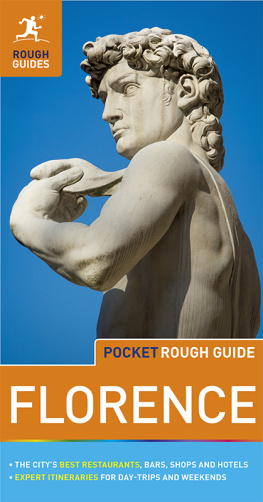
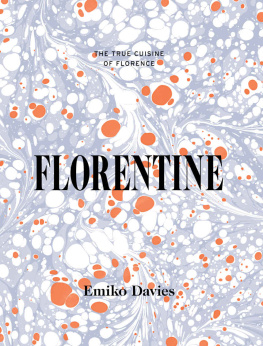




 shop
shop  food & drink
food & drink accepts credit cards
accepts credit cards does not accept credit cards
does not accept credit cards
